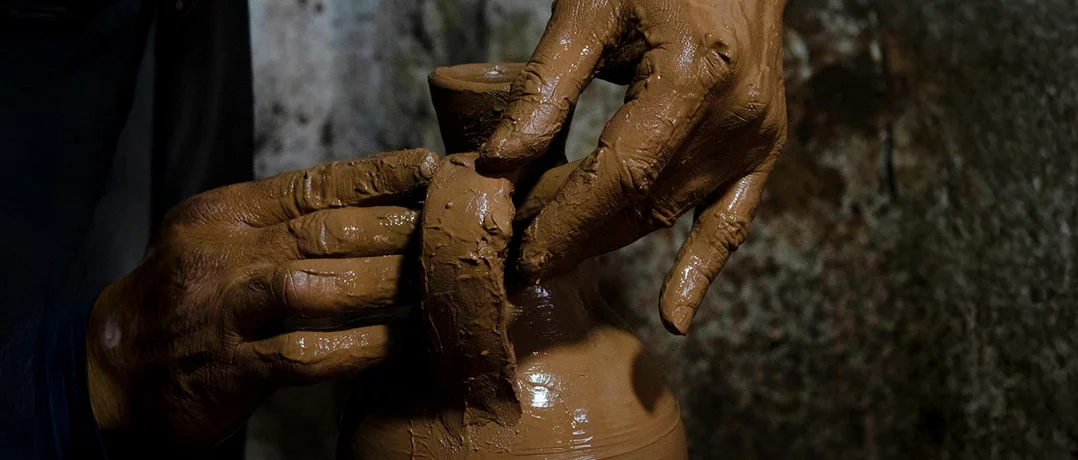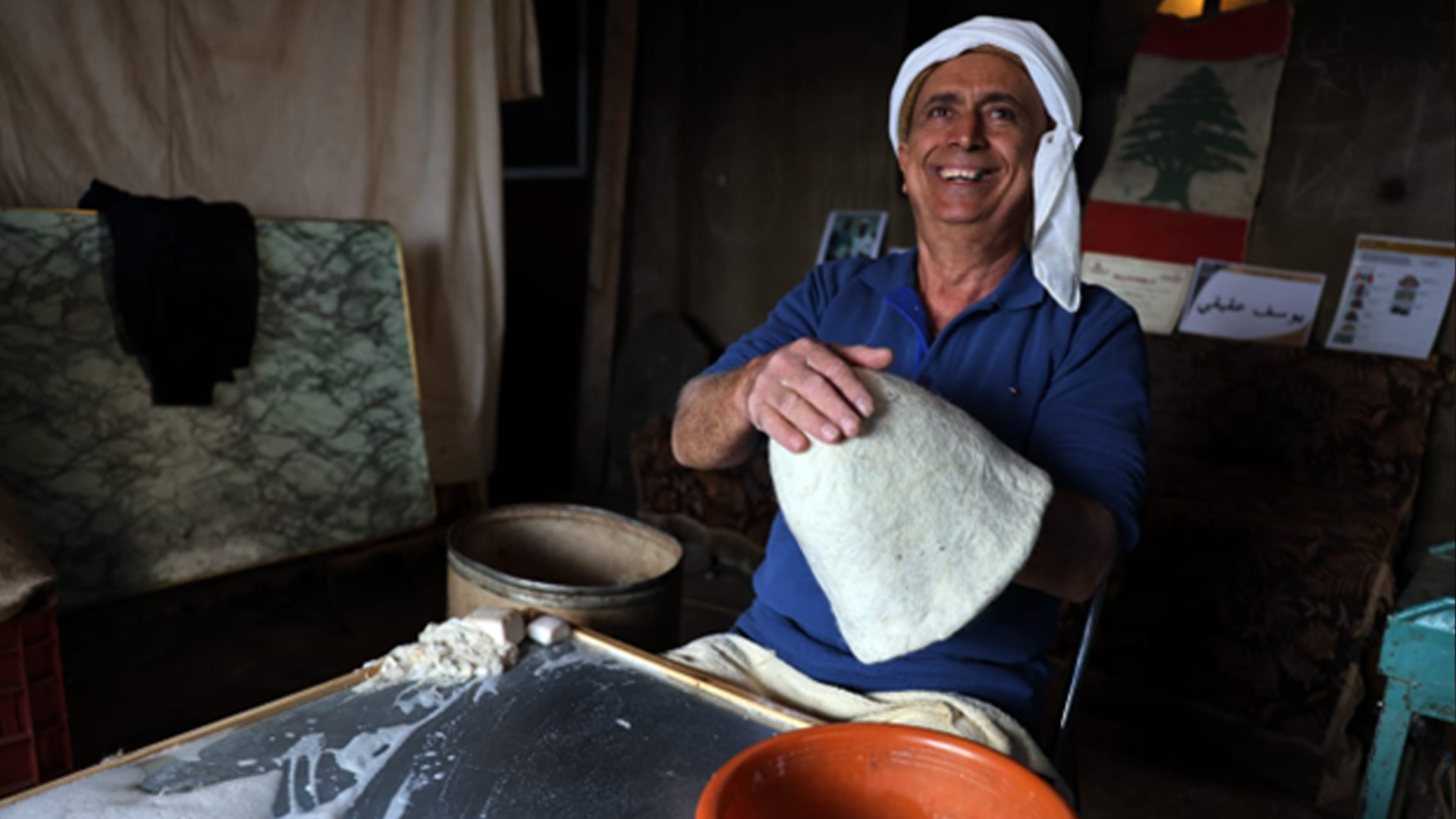From the coast to the mountains, Lebanon’s last Tarboush maker, Sherwel tailor, pottery artisans, and Labadeh hat maker are quietly working their final years. Their craft carries centuries of memory, yet support is scarce, and younger generations rarely follow in their footsteps.
Lebanon’s vanishing crafts: The last threads of a cultural heritage
Lebanon’s vanishing crafts: The last threads of a cultural heritage


In the dim alleys of Khan Al Khayatin, fabric spills across a wooden table as Mounib Adnan Al Katameh folds and cuts the Sherwel, the wide trousers once worn by farmers and laborers across Lebanon. His hands move with precision, guided by memory more than by pattern. “The Sherwel is in our roots,” he says.
It’s what farmers wore, what dancers still wear. But today, people see it only as a costume. They don’t understand that it was our everyday life.
The Sherwel, built for movement and endurance, once clothed entire villages. It swayed with farmers in the fields, carried dancers across weddings, and accompanied travelers along the mountain roads. Its pleats and folds were stitched with a kind of knowledge that can’t be found in books, knowledge of fabric, of posture, of daily labor. But the craft has nearly vanished. Apprentices rarely last long. “I tried to teach,” Mounib admits. “But no one stays. They want fast money, not slow stitches.”
The fading workshops
Down the street, in Tripoli’s old quarters, crimson wool crowns wooden molds, tassels waiting to complete the shape. Mohammad Chaar, the city’s last tarboush maker, insists on keeping the fez alive, the iconic headpiece once worn by grooms, dignitaries, and everyday men across the Levant. His family has passed down the craft for generations, and though demand has nearly vanished, he works with the same dedication as his forefathers. “I’m the only one left,” he says.
If this profession is lost, Lebanon will lose a major part of its culture.
The silence that settles over his workshop is echoed elsewhere, in areas where the potters’ wheels spin less often than they once did. From Akkar to Nabatiyeh, families who have shaped clay into jars, taboun platters, and water jugs for centuries now watch as their shelves remain half-empty. “When you shape clay, you shape the earth itself,” says Abou Abdallah, his hands powdered with mud. “It’s like holding history in your hands.” Pottery was once indispensable, jars kept water cool through long summers, dishes carried bread fresh from the oven, and amphorae held oil and wine. Each piece tied households to the land, linking daily survival with artistry. But shelves today sit bare, not for lack of skill but for lack of demand: Elias, another master, gestures toward his kiln. “Plastic killed us,” he says with resignation. “People stopped buying. When the kiln goes cold, it may never be lit again.”
Farther up, in the mountains, another craft slips into obscurity. Among shepherds and villagers, the Labadeh hat was once as common as bread. Made from sheep’s wool pressed and shaped by hand, its round form shielded against snow in winter and sun in summer. But to most eyes now, it is an oddity, even a joke. “No one wants to wear it,” says Youssef Akiki, one of the last who still makes it. “People laugh when they see it. But it kept our fathers alive in winter.” His workshop carries the scent of wool, a reminder of colder times when every family owned at least one. “I keep making them,” he adds quietly, “but it feels like I’m sewing silence.”
 Youssef Akiki, during his workshop on making the “Labadeh”. Photo credits: Provided by Akiki.
Youssef Akiki, during his workshop on making the “Labadeh”. Photo credits: Provided by Akiki.
What remains when silence falls
These voices, scattered from the coast to the mountains, speak to the same truth: Lebanon’s traditional crafts are disappearing. They survive in fragments, in solitary workshops where artisans keep working not because it sustains them, but because to stop would mean abandoning centuries of memory. The sherwel, the labadeh, the clay jug, the tarboush, each is more than an object. Each is a language, carrying meanings that words cannot fully hold.
When a sherwel is stitched, it remembers the body of the farmer who wore it to the fields. When clay is shaped, it carries the earth of the village where it was dug. When a labadeh is pressed, it recalls the shepherd warming his head against the wind. When a tarboush is placed on the brow, it crowns not just a man but a tradition. To lose these crafts is to lose a vocabulary, a way of telling who we are and where we came from.
“We want to create a syndicate and NGO for cultural artisans in Lebanon,” Chaar says. “I shouldn’t have to pay to participate in festivals. We should be invited and supported as part of Lebanon’s cultural heritage.”
Other countries recognize this and act. They subsidize artisans, certify apprentices, and weave heritage into their cultural tourism. Lebanon does little. Here, the artisans are left alone to navigate an impossible economy, waiting for customers who rarely come. Some receive small loans or occasional support, but these gestures are fleeting. More often, they work in silence, carrying the weight of traditions no one else will bear.
Yet they refuse to abandon their crafts. “Even if no one buys, I keep the fire lit,” says Abou Abdallah, glancing at his kiln. “Once it dies, there is no return.” In his mountain workshop, Youssef runs his hand over the coarse wool. “It’s not just a hat,” he says. “It is the warmth of my father, and his father before him.” For Mounib, each sherwel is a stitch against forgetting: “Every piece I make is proof that we existed.” And in Tripoli, surrounded by crimson wool, Mohammad Chaar stands firm. “I would never leave this. As I work, I imagine the person who will wear it.” But his children will not follow. “Before 2018, maybe. Now? No. I can’t ask them to live on $100 a month.”
For now, these men keep stitching, shaping, and pressing, their workshops echoing with the last sounds of a handmade Lebanon. They are the final keepers of a fragile thread, tying the present to the past. When the thread breaks, it will not only be fabric, clay, or wool that unravels. It will be Lebanon’s memory itself, scattered like dust across an empty workshop floor.


.webp)